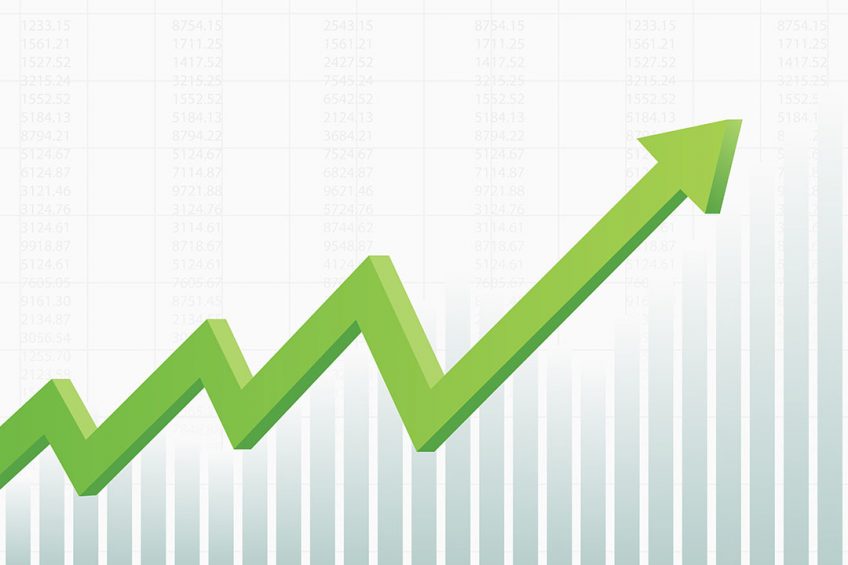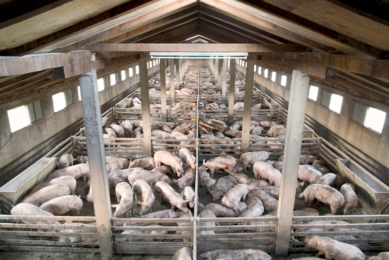Covid-19: North America’s pig industry holding steady

For the third week in a row, US pig processing has stayed above 90% of normal capacity. Pork production overall, even with Covid-19, is now expected to be slightly higher in the US than it was in 2019. These are the developments in North America this week.
Covid-19 has caused a sharp decline in North American pork processing capacity this year due to temporary plant closures and reductions in processing speed. However, for the third week in a row, according to Genesus CEO Jim Long, the total number of pigs processed in the US rose to a level that exceeded both the week before and the same week in 2019.
Pig market weights continue to decline slightly
Long asserted that last week, the total US hog market harvest reached 2,587,000, about 130,000 more than both a week ago and a year ago. Pig market weights continue to decline slightly, according to Long, from the high weights that resulted from pigs having to remain on farms due to the processing backlog.
Pig processing projections
Jim Munroe, spokesperson for the National Pork Producers Council (NPPC), said that this week, overall US pig processing capacity is at roughly the same level as last week, above 90% of normal.
Meanwhile, the US Department of Agriculture Economic Research Service (ERS) reported that “while capacity utilisation rates in the US pork processing sector are rebounding, pork production for the balance of 2020 and into 2021 will likely reflect rates lower than a year ago as processors implement US government guidance measures to reduce Covid-19 infections.”
Overall, the service expects that pork production in 2020 is expected to be 0.5% above a year ago and 2021 production will be 1.7% higher than production this year.
China banning pork is ‘a real risk factor’
Over the last week, China has suspended meat imports from specific facilities in 2 countries, one a US poultry packing plant and the other being Tönnies, a German pork packing plant, over fears that Covid-19 outbreaks at these facilities could pose a risk in causing fresh cases in China. One expert reached by Reuters reporters called the move to temporarily ban imports from the German pork plant “a real risk factor” for pork exporters like the US.

Read the latest on the developments about the pork plant in Germany
Similarly, Transport Topics News reported that “China’s move to test imported meat for the coronavirus is threatening to derail [US] trade with the world’s largest pork consumer [China].”
No virus detected in samples
The same day that China suspended pork imports from the plant in Germany, June 18, Chinese customs officials stated that over 30,000 samples from imported meat, seafood and produce had been tested for Covid-19 between June 11-17 and no virus was detected. Many experts worldwide have stated from the very start of the pandemic that the risk of contracting the disease from any food source is extremely unlikely.
New funding in Canada
The federal government and that of the province of Ontario have announced up to CAN$ 10 million (US$ 7.3 million) in new assistance for hog and beef farmers.

Covid-19 Up-date
What impact is the pandemic having on the global pig sector and how are they dealing with it.
“The funding will help cover the increased costs of feeding market-ready cattle and hogs due to Covid-19 related processing delays, while redirecting surplus pork products to help those in need,” stated a press release. Hog farmers will collectively receive up to $ 5 million (US$ 3.7 million) to help cover added costs. Eric Schwindt, chair at Ontario Pork, called the move “an important first step in helping family pork farms to navigate this stressful situation.”
Ripple effect
As the US pork sector struggles to clear on-farm backlogs resulting from slowdowns at packing plants there, this continues to financially impact weanling operations in the Canadian province of Manitoba. Looking back at May, the Manitoba Pork Council estimates that prices for piglets shipped to the US under contract orders were about US$ 11-15, “a marked downturn compared to before the Covid-19 pandemic.” Cash sales were much lower.











